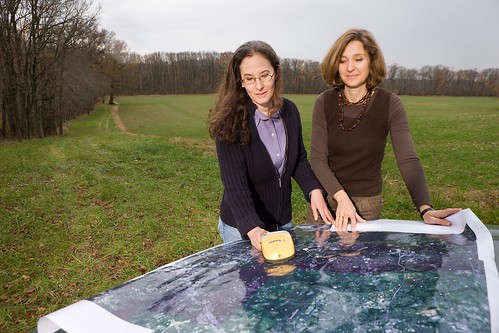
This post is part of the Science Tuesday feature series on the USDA blog. Check back each week as we showcase stories and news from the USDA's rich science and research portfolio.
Location, location, location: We all know the real estate cliché that defined a post-war boom that gobbled up fields and forests, making the Washington metropolitan region one of the most congested in the United States.
But before that began, the USDA scientists of what’s now known as the Henry A. Wallace Beltsville Agricultural Research Center (BARC) in Beltsville, Md., were ahead of the preservation curve, starting with a 500-acre purchase in 1910 and continuing to buy parcels of land to cobble together a swath of forests and meadows known as the “Green Wedge.”
Just 15 miles from the White House, much of the nearly 26,000 –acre preserve has been in federal hands since before 1940. The Green Wedge is the largest expanse of contiguous deciduous forest remaining between Boston, Mass., and Norfolk, Va.
Fast forward to 2009 and an Executive order calling for increased cooperation between federal, state and local agencies and organizations to help clean up the Chesapeake Bay.
But in fact, BARC and other major landowners of the Green Wedge, including the U.S. Fish and Wildlife Service, the National Aeronautics and Space Administration and the U.S. Army, have been cooperating since 2006 as the Baltimore-Washington Partners for Forest Stewardship to help protect the health of the Bay.
The Green Wedge has served as the lungs and kidneys for the Washington, D.C., metropolitan area with vegetation and wetlands that filter out pollutants before they reach the Bay. BARC’s streams deliver clean water to the Bay, and the partnership helps keeps that water clean by planting buffers of trees along the streambanks.
Thanks to the foresight of those scientists of 1910 and the efforts of their modern-day counterparts, this partnership could play a vital role in keeping the Bay healthy for the next 100 years.

